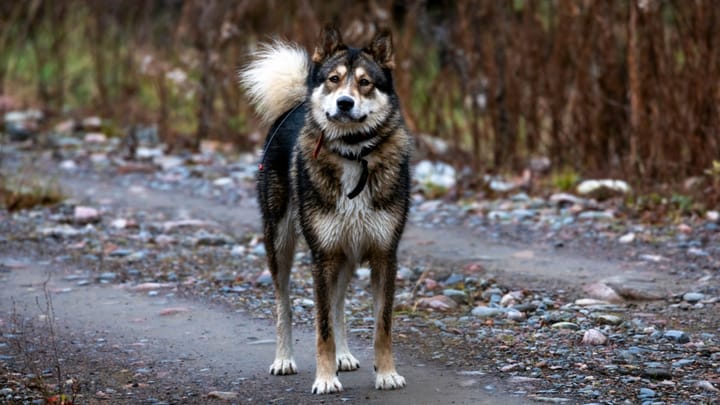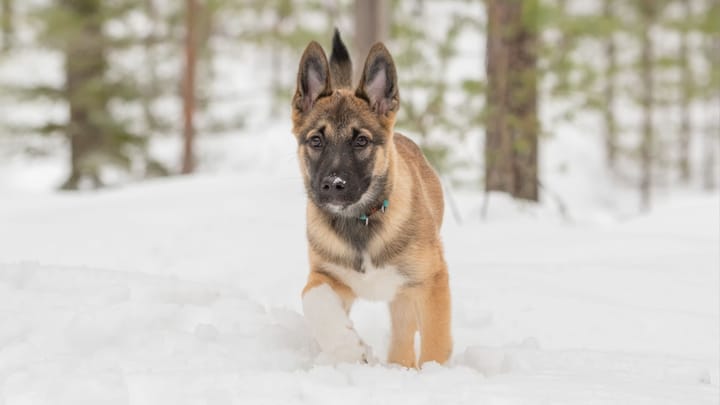East Siberian Laika
Other name: Vostotchno-Sibirskaia Laika


The largest of the wolfish Laika breeds of Russia is a lean and work-lady type, as are her cousins the Karelo-Finnish Laika, Russo-European Laika, and West Siberian Laika. Informally developed to hunt, to pull a sled, and even as a drover, she has enjoyed more purposed breeding by professionals over the past half-century after her numbers declined dramatically. She is said to have the closest connection, among her cousins, to her wolf heritage, and as such she can be a little hunty and independent and therefore unsuitable for some young families. However, were you to locate one of these rare beasts for adoption, you would likely find her a loyal and serious companion.
|
Life expectancy |
The East Siberian Laika has a life expectancy of between 12 and 14 years |
|
Temperament |
|
|
Size |
Medium
|
|
Adult size |
Female
Between 21 and 24 in
Male
Between 22 and 25 in
|
|
Adult weight |
Female
Between 44 and 66 lb
Male
Between 44 and 66 lb
|
|
Coat colour
White, or piebald (white with patches). May have specks of colour on legs. |
Black White Red |
|
Type of coat
Double: harsh, straight outer and soft, woolly inner. Medium length. |
Short Hard |
|
Eye colour
Dark brown. |
Brown
|
The East Siberian Laika is hard to get hold of outside of her native region.
More details about the East Siberian Laika
East Siberian Laika: Origins and history
The East Siberian Laika is an exotic mix of Siberian wolf with the Chinese and Japanese spitz-type dogs that passed through the region centuries ago. It wasn’t until 1947 that she was granted her own breed name aside from that of her Laika cousins. Her number dipped as this all-purpose dog lost out in popularity to more specifically-purposed dogs, but efforts were made to build her number, and today her numbers are now safe, if still quite low.
Physical characteristics of the East Siberian Laika
Wolfish with a little less discipline to her look than the more cartoony West Siberian Laika, the Eastie is all the same easy on the eye: her proportionally large, serious head may give the impression of being slimmer than it is due to a wedgy outline that borders on the triangular. Her face is economical, with a short, blunt muzzle, tight lips, and slanting oval eyes. Her ears are erect and V-shaped. Her body is broad but tight, muscular, and poised for action, while the fluffy, sickle-shaped tail of this hunter of the former Soviet Union adds relief.
FCI classification of the East Siberian Laika
-
Group 5 - Spitz and primitive types
-
Section 2 : Nordic Hunting Dogs
East Siberian Laika: Characteristics
East Siberian Laika: Behaviour
Training a East Siberian Laika
The East Siberian Laika is clever and eager to please, so training can be a joy – except when she rears that stubborn nature of hers.
East Siberian Laika: Lifestyle
Breed compatibility East Siberian Laika
East Siberian Laika: Purchase price
We do not have enough data to set an average price. Looking after a dog of this size typically costs between £70 to £100 a month, including food, medical/insurance, and incidental expenses.
East Siberian Laika: Grooming
She should be brushed regularly.
East Siberian Laika: Health
This is usually a hardy and healthy dog with few known genetic illnesses. The average life expectancy is between 12 to 14 years.
The East Siberian Laika is a hardy outdoors type.
She may suffer in the heat due to her thick coat, so water and a shady spot should be available.
This dog’s double coat is perfectly designed to weather cold climates.
Not especially.
- Cryptorchidism
- Hip and Elbow Dysplasia





